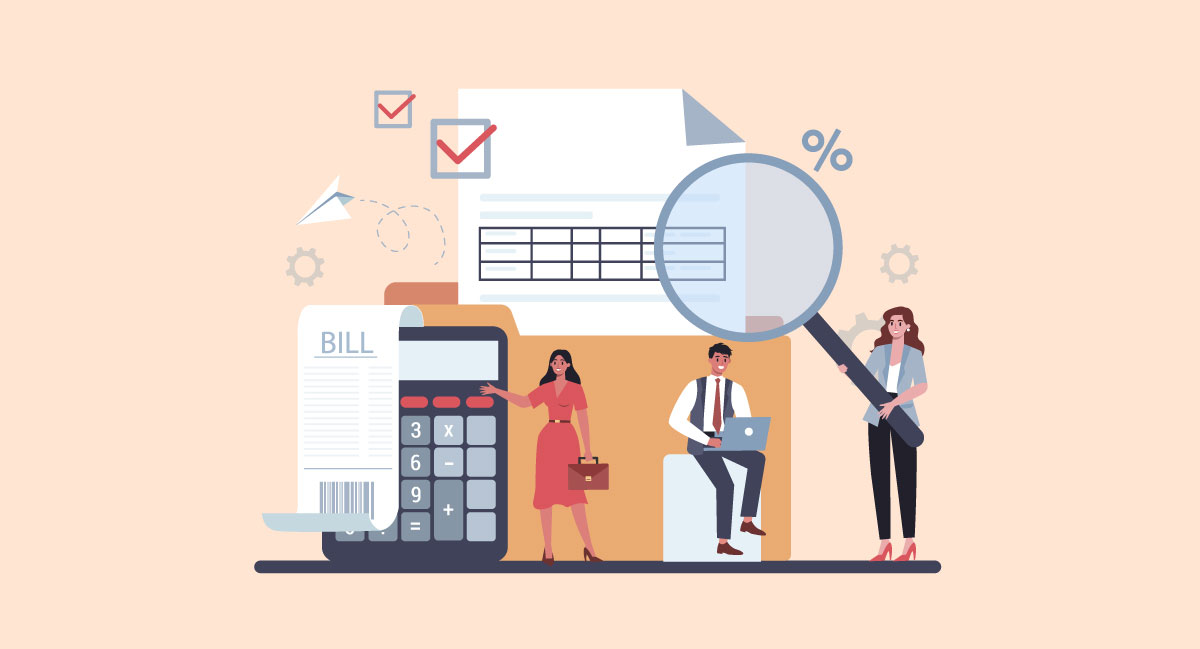What is a Bill of Exchange?
If you are wondering how to define a bill of exchange, we have it covered. A bill of exchange is a widely used legal document in international trade. It functions as a written order that legally binds one party, known as the drawer, to pay a specific, fixed sum amount of money to another party, known as the payee, either upon request or at a predetermined future date. This document can be issued by an individual or a bank and serves as a guarantee of payment. According to research, In 2015, a staggering number of over 165 thousand bills of exchange were issued in the scenic Canary Islands, exclusively for the purpose of managing debt collection from clients.
What distinguishes bills of exchange from other financial instruments, such as cheques and promissory notes, is their transferability. Through a process called endorsement, they can be transferred from the original payee to a third party.
Expert Advice
The bill of exchange proves itself as an indispensable financial tool that wields immense power in driving trade and commerce. Its significance lies in its unwavering ability to deliver a secure and streamlined payment mechanism for international transactions. Using bills of exchange can streamline financial operations and increase security, leading to a win-win situation for all parties involved.
Endorsement involves the endorsement signature on the back of the bill, indicating the transfer of ownership rights to the new party. This feature enables bills of exchange to be utilized as a means of payment or credit in business transactions. There is plenty more to know about bills of exchange, so let’s dive in!
How Does A Bill of Exchange Work?
A trading bill can involve a maximum of three parties. The drawee is the entity responsible for settling the specified amount mentioned in the bill of exchange. The payee is the recipient of the payment, while the drawer is the party that compels the drawee to make the payment to the payee.
Since the drawer does not transfer the bill of exchange to a different payee in this specific scenario, the payee and the drawer are the same. However, a bill of exchange and a check have important differences. A written statement of the debt owed by a debtor to a creditor is known as a bill of exchange.

Unlike a check, it is not immediately payable upon request and often includes credit terms, such as a 90-day period. Additionally, the bill of exchange must be accepted by the drawee to be considered valid. Typically, commercial bill of exchange transactions do not involve interest and can be seen as deferred payments.
However, if the inland bill is not settled by a specified date, they may accrue interest, and the applicable rate must be mentioned in the document. Conversely, these bills can be transferred at a discounted value before the designated payment date.
What Is The Importance Of Bills Of Exchange?
Bills of exchange are crucial financial instruments that underpin modern trade and commerce. Let’s explore how bills of exchange play a pivotal role in the current business landscape.

1. Facilitate Trade and Commerce
Due to the fact that they provide a safe and widely accepted method of payment, bills of exchange play a crucial role in both domestic and international trade.
They give businesses the ability to set credit terms, facilitating easy exchanges between buyers and sellers. Bills of exchange foster trust and encourage the exchange of goods and services by utilizing a standardized payment mechanism.
2. Effective Cash Flow Management
One notable benefit of bills of exchange is their ability to defer payment to a future date. This flexibility empowers businesses to manage their cash flow effectively.
Sellers can receive payment at a later date, allowing them to continue operating and investing in their ventures. Conversely, buyers can delay payment until a predetermined date, aligning their cash outflows with revenue generation.
3. Mitigate Risks
Bills of exchange offer security in transactions by providing endorsement and transferability. Parties involved can mitigate the risk of non-payment or default. In the event of a buyer’s failure to make payment, the seller can pursue legal remedies using the bill of exchange as evidence of the underlying debt. This reduces financial uncertainties and potential losses associated with trade transactions.
4. Legal Protection
Bills of exchange carry legal significance, offering a robust framework for dispute resolution. In cases of non-payment or breach of contractual obligations, bills of exchange serve as formal evidence of the owed debt. They can be utilized in legal proceedings to enforce payment, providing businesses with legal protection and recourse.
What are the Advantages of a Bill of Exchange?
The bill of exchange is a vital financial instrument that has been used in commercial transactions for centuries, offering numerous advantages to businesses and some financial assistance to individuals in trade and finance. Some of the key advantages of a bill of exhange include:

1. Minimum Risk Defaults
An essential advantage of the bill of exchange is its ability to minimize the risk of defaults. Parties entering a bill of exchange transaction establish a legally binding obligation to make payment at a future date, providing assurance to the payee. In case of non-payment by the drawee, the holder of the bill can seek legal recourse to recover funds, reducing the risk of default and providing a reliable method of recourse.
2. Highly Negotiable
The bill of exchange is a highly negotiable instrument, enhancing its flexibility and usability. This negotiability enables businesses to settle debts, make payments to suppliers, or even raise capital by selling the bill to interested parties. The transferability of bills of exchange allows for seamless transactions, reducing administrative complexities and facilitating efficient trade.
3. No Required Security
Unlike some financial instruments, a bill of exchange does not necessitate collateral or security. The acceptance and discounting of the bill rely on the creditworthiness and reputation of the parties involved.
This accessibility makes bills of exchange available to a broader range of businesses and individuals, including those without substantial assets or collateral. Consequently, bills of exchange provide an opportunity for businesses with limited collateral to access funds and engage in trade on favorable terms.
4. Investment Flexibility
Bills of exchange offer investment flexibility. Investors can choose to hold bills until maturity to receive full payment, or they can sell them in the secondary market at a discounted price.
Moreover, the negotiability of bills allows investors to diversify their portfolios by investing in bills from different issuers or industries, spreading investment risk and potentially increasing returns.
5. Can Be Utilized Without Diluting Capital
A significant advantage of the bill of exchange is drawn by is that it can be utilized without diluting a company’s capital. By using bills of exchange for trade transactions or raising finance, businesses avoid the need to issue additional shares or raise funds through equity-based financing.
This preserves the company’s ownership structure and existing shareholders’ equity. Utilizing bills of exchange as a financial instrument offers an alternative method for businesses to meet their funding needs while maintaining their capital structure.
What Are the Different Types of Bills of Exchange?
The different types of bills of exchange enable a thorough understanding of their importance and intended purposes. This classification provides us with useful information about the particular uses and the various contexts in which these drafts or bills are used. The different types of bills of exchange are written below. Let’s take a look at them!

1. Bank Draft
A bank draft is a particular type of bill of exchange issued by a bank on behalf of a customer. It is a safe form of payment because it carries the bank’s guarantee. When a bank draft is issued, the specified amount is deducted from the customer’s account, and a draft is created payable to the specified payee by the bank.
Following that, the payee can present the bank draft to the bank and either receive cash or have the payment deposited into their own account. Bank drafts are commonly used for large payments, such as real estate purchases or international transactions.
2. Trade Draft
A trade bill of exchange that results from business transactions is referred to as a trade draft, also referred to as a commercial draft. It is primarily used when businesses are trading goods or services.
In a trade draft, the seller (drawer) directs the buyer (drawee) to pay a specific amount later on to either the seller or another party (payee). Important information like the due date, payment amount, and terms are all included in the trade draft.
3. Sight Draft
A sight draft, as its name implies, is payable upon presentation or “at sight.” Within this type of bill of exchange, the drawee is obligated to make immediate payment or within a short time frame after the draft is presented.
The payee may present the sight draft to the drawee, who must honor the draft and make immediate payment. In the event that the drawee fails to make the payment, the payee retains the right to seek legal redress.
4. Time Draft
A time draft, also known as a usance draft, is payable at a future specified date subsequent to the presentation of the draft. Unlike sight drafts that necessitate immediate payment, time drafts grant the drawee a specific period to fulfill the payment obligation. The maturity date, indicating when the payment is due, is clearly stated on the time draft.
Time drafts are frequently employed in international trade transactions, granting the buyer a grace period to make the payment. This proves advantageous when dealing with long-distance shipments or when the buyer requires time to arrange financing.
Familiarity with the various types of bills of exchange empowers businesses to select the most suitable instrument for their specific transactional requirements, thereby promoting efficiency and reliability in the exchange of goods and services.
Who Are The Parties To A Bill Of Exchange?
A bill of exchange transaction typically involves three key parties. The drawee is responsible for making the specified payment indicated in the bill of exchange and is obligated to pay interest to the payee, who receives the funds. The drawer, on the other hand, initiates the bill of exchange and directs the drawee to make the payment to the payee. If the drawer does not transfer the bill to another payee, the drawer and the payee are considered the same entity.
Essentially, a bill of exchange is a written document that serves as evidence of a debtor’s indebtedness to a creditor. It distinguishes itself from a check, which is merely a physical piece of paper. Bills of exchange are widely used as a method of payment in international trade, facilitating the smooth exchange of goods and services.
While the meaning of bills of exchange is not a contract on its own, it can be employed in conjunction with a contract to fulfill its requirements. The bill may specify immediate payment or indicate a specific future payment date. Additionally, bills of exchange commonly incorporate credit conditions, such as payment due after a stipulated period, often around ninety days.
Bill of Exchange Format
It is important to understand the proper format of a bill of exchange. Some key components of the format of a bill of exchange include:
- The name of the person who draws the bill and authorizes the recipient to pay.
- The date on which the payment is to be made.
- The details of the recipient.
- Details of the payee.
- The identification number.
- Signature of the person who makes the bill (drawer).
Also read: What Is GST Invoice? Rules, Format and Types
Example of Bill of Exchange
When it comes down to the bill of exchange examples, there are a variety of them. A few of them are written below. Let’s dig deep!

Example#1
In an intriguing transaction, Samuel, a savvy merchant, issued a $100,000 bill of exchange to his customer, Marco, as payment for a substantial amount of goods on October 5th, 2020. However, Marco delayed his acceptance and finally acknowledged the bill on October 10th, 2020.
While Samuel is the bill’s issuer, he graciously assumes the role of the creditor, while Marco, who received the goods on credit, becomes the debtor, entangled in debt.
Although the bill was initially presented to Marco on the day of the credit purchase, it gained its official status as a distinguished commercial bill of exchange only upon Marco’s acceptance on October 10th.
Example#2
Company ABV sent a $20,000 bill to Company BVX for things they bought on credit. BVX agreed to pay the money three months later. But when the due date for the accommodation bill came, BVX didn’t pay, so ABV’s bill was dishonored. Everyone involved got a notice saying the bill was dishonored.
Dishonoring a bill means BVX didn’t keep its promise to pay the money owed in the bill. ABV can take legal steps to get their money back, and BVX could face legal and money problems. Dishonoring bills can have long-term effects on a company’s finances and relationships with other businesses.
Conclusion
By establishing a binding contract, the bill of exchange in export acts as the ultimate facilitator of the seamless flow of goods and services across borders. The meticulously standardized format of a bill of exchange amplifies its reputation and worldwide acceptance.
Also read: Invoice vs Bill vs Receipt – What’s The Difference?
Moreover, the array of bill types caters to very diverse transactional requirements. Through vivid illustrations, the profound impact of this versatile instrument in nurturing trust, propelling economic expansion, and energizing global trade dynamics have been significantly witnessed. Connect with our professionals to learn more about the bill of exchange today!
Frequently Asked Questions

Supriya is a highly skilled content writer with over 8 years of experience in the SaaS domain. She believes in curating engaging, informative, and SEO-friendly content to simplify highly technical concepts. With an expansive portfolio of long-format blogs, newsletters, whitepapers, and case studies, Supriya is dedicated to staying in touch with emerging SaaS trends to produce relevant and reliable content.
Need Any Technology Assistance? Call Pursho @ 0731-6725516





